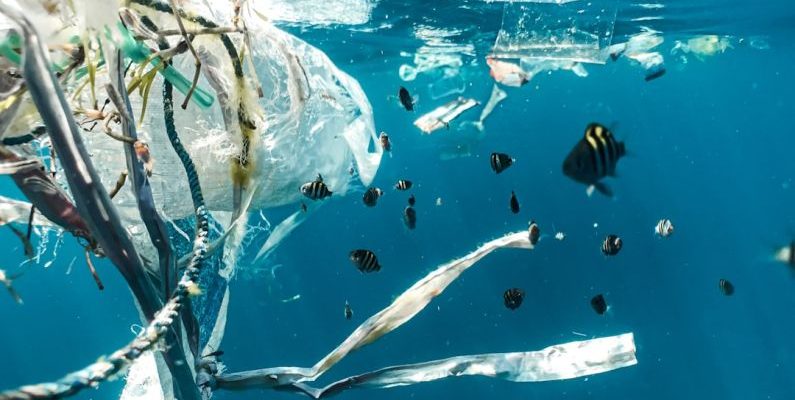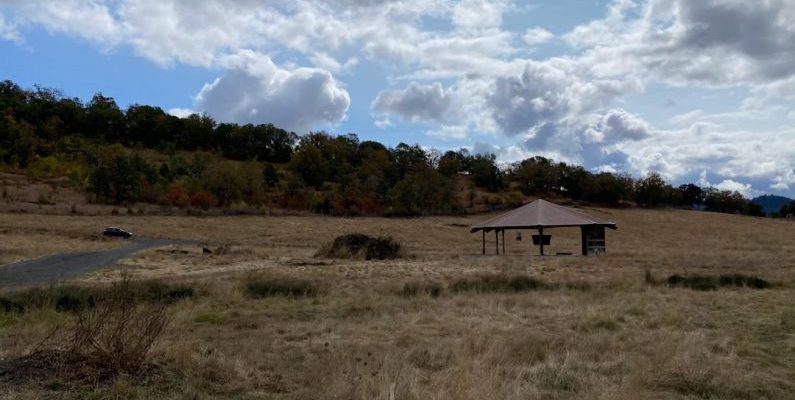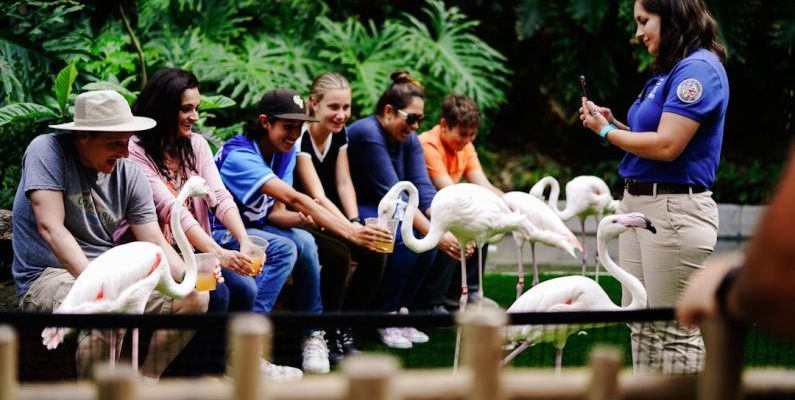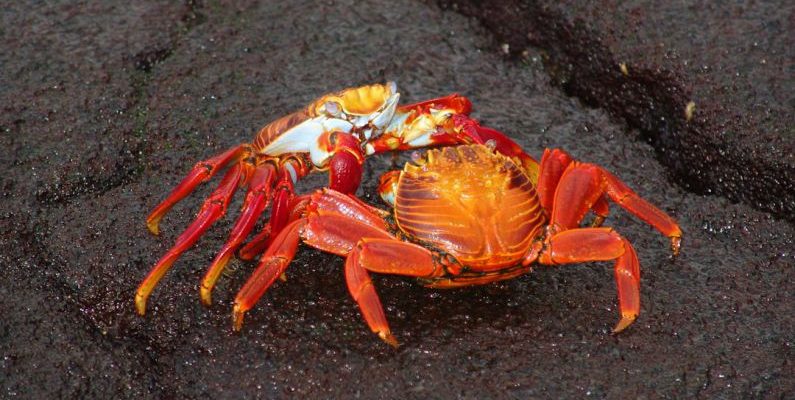Nestled away from the hustle and bustle of city life lie some of the world's most pristine national parks, offering a sanctuary of unspoiled beauty and tranquility for nature enthusiasts and adventurers alike. These protected areas are a treasure trove of biodiversity, natural wonders, and awe-inspiring landscapes waiting to be explored. From the depths of the Amazon rainforest to the towering peaks of the Himalayas, let's embark on a journey to discover some of the most captivating national parks around the globe.
Eco-Tourism
In Eco-Tourism
Plastic pollution has become a pressing environmental issue, particularly in our oceans. The detrimental impact of plastic waste on marine life and ecosystems cannot be overstated, prompting global efforts to combat this growing threat. As awareness of the problem continues to increase, various initiatives and campaigns are being launched to tackle the issue head-on. From cleanup projects to innovative solutions, the fight against plastic pollution in our oceans is more crucial now than ever before.
The Scope of the Problem
The scale of plastic pollution in our oceans is staggering. It is estimated that over 8 million tons of plastic waste enter the world's oceans every year, causing significant harm to marine animals and habitats. Single-use plastics, such as bottles, bags, and straws, are among the most common culprits, with millions of tons ending up in the ocean annually. These plastics do not biodegrade but instead break down into smaller pieces known as microplastics, which can be ingested by marine creatures, leading to a range of negative consequences.Impacts on Marine Life
The impact of plastic pollution on marine life is profound and far-reaching. Countless marine animals, from sea turtles to seabirds, are harmed or killed by ingesting plastic debris or becoming entangled in it. Plastic pollution also disrupts marine ecosystems, affecting the balance of marine food chains and habitats. Additionally, the chemicals present in plastics can leach into the water, further endangering marine life and potentially finding their way into the human food chain.Cleanup Efforts
Efforts to clean up plastic pollution in our oceans are underway around the world. Beach cleanups, organized by various environmental groups and volunteers, help remove tons of plastic waste from coastal areas each year. These initiatives not only help to beautify our beaches but also prevent plastic from entering the ocean and causing harm to marine life. Furthermore, advances in technology have led to the development of innovative cleanup solutions, such as floating barriers and drones, which can target and remove plastic debris from the water more efficiently.Policy and Legislation
In addition to cleanup efforts, policy and legislation play a crucial role in the fight against plastic pollution in our oceans. Many countries have implemented bans or restrictions on single-use plastics, such as plastic bags and straws, to reduce plastic waste at the source. International agreements, such as the Basel Convention, aim to regulate the transboundary movement of plastic waste and promote greater accountability among countries for managing their plastic waste responsibly. By enacting and enforcing strong policies, governments can help curb the flow of plastic into our oceans and protect marine ecosystems.Innovative Solutions
Innovation is key to addressing the challenge of plastic pollution in our oceans. Scientists and engineers are constantly developing new technologies and materials to reduce the impact of plastic waste on the environment. Biodegradable plastics, made from plant-based materials, offer a more sustainable alternative to traditional plastics and can help minimize the accumulation of plastic in the ocean. Furthermore, initiatives such as plastic-eating bacteria and ocean cleanup arrays show promise in removing existing plastic waste from the water and preventing further pollution.The Road Ahead
The fight against plastic pollution in our oceans is a complex and ongoing battle that requires collective action on a global scale. While progress has been made in raising awareness and implementing strategies to address the issue, much more needs to be done to effectively tackle the root causes of plastic pollution. Individuals, businesses, governments, and organizations all have a role to play in reducing plastic waste, promoting recycling, and supporting efforts to clean up our oceans. By working together and embracing sustainable practices, we can make a positive impact on the health of our oceans and preserve them for future generations.
In Eco-Tourism
In our modern world, being conscious of our impact on the environment is becoming increasingly important. This mindset extends to all aspects of our lives, including how we choose to travel. For travelers looking to reduce their carbon footprint and make more sustainable choices, there are a variety of eco-friendly transportation options available. By opting for these environmentally friendly modes of travel, individuals can not only reduce their impact on the planet but also explore new destinations in a more responsible way.
**Eco-Friendly Public Transportation**
One of the easiest ways for travelers to reduce their carbon footprint is by using public transportation whenever possible. Public transportation systems in many cities around the world are well-developed and offer a convenient and sustainable way to get around. Trains, buses, and trams are all great options for eco-conscious travelers, as they help to reduce the number of individual cars on the road, therefore decreasing emissions. Additionally, public transportation can provide a unique opportunity to experience a destination from a local perspective, giving travelers a more authentic and immersive experience.
**Cycling and Walking**
For travelers looking to explore a destination at a slower pace and in a more environmentally friendly way, cycling and walking are excellent options. Many cities and towns around the world are becoming more bike-friendly, with dedicated bike lanes and rental services available for visitors. Cycling not only reduces carbon emissions but also allows travelers to connect more closely with the places they are visiting. Similarly, walking is a sustainable and healthy way to explore a destination, offering the chance to discover hidden gems and interact with locals along the way.
**Electric Vehicles**
As technology continues to advance, electric vehicles are becoming an increasingly popular option for eco-conscious travelers. Electric cars, scooters, and bikes offer a sustainable alternative to traditional gasoline-powered vehicles, producing zero emissions and helping to reduce air pollution. Many destinations are now investing in electric vehicle infrastructure, such as charging stations, making it easier for travelers to choose this environmentally friendly option. Renting an electric vehicle can be a great way to explore a destination while minimizing your carbon footprint.
**Car-Sharing and Ride-Sharing Services**
For travelers who need the convenience of a car but want to minimize their environmental impact, car-sharing and ride-sharing services are excellent options. Companies like Zipcar and Uber offer convenient and cost-effective ways to get around without the need for individual car ownership. By sharing rides with others, travelers can reduce the number of cars on the road and decrease emissions. These services also provide an opportunity to meet locals and gain insight into the best places to visit in a destination.
**Eco-Friendly Cruises and Trains**
When traveling longer distances, eco-friendly cruises and trains can be a more sustainable option compared to flying. Many cruise lines and train companies are making efforts to reduce their environmental impact by implementing energy-efficient technologies and reducing waste. Traveling by cruise or train can also be a more leisurely and scenic way to see the world, offering stunning views and unique experiences along the way. By choosing these modes of transportation, travelers can enjoy a more sustainable journey while exploring new destinations.
**Sustainable Travel Choices for a Greener Future**
As travelers become more aware of the environmental impact of their journeys, the demand for eco-friendly transportation options continues to grow. By choosing sustainable modes of travel, individuals can play a part in reducing emissions, preserving natural resources, and supporting local communities. Whether it's opting for public transportation, cycling and walking, electric vehicles, car-sharing services, or eco-friendly cruises and trains, there are plenty of ways for travelers to make more responsible choices. By embracing these eco-friendly transportation options, travelers can enjoy a greener future while exploring the world in a more sustainable way.
In Eco-Tourism
As our world grapples with the effects of climate change, the importance of tree planting has never been more crucial. Tree planting tours offer a unique opportunity for individuals to actively contribute to the environment while immersing themselves in nature. If you are eager to participate in tree planting tours but unsure where to start, here is a comprehensive guide to help you get involved.
Choosing the Right Tree Planting Tour
Tree planting tours come in various forms, from local community events to organized trips to reforestation projects in different parts of the world. Before embarking on a tree planting tour, it's essential to research and select a tour that aligns with your interests and values. Consider factors such as the location of the tour, the type of trees being planted, the duration of the tour, and the organization leading the initiative.Preparing for the Tour
Once you have chosen a tree planting tour that resonates with you, it's crucial to prepare adequately for the experience. Check with the tour organizers for any specific requirements or recommendations regarding clothing, gear, and physical fitness. Most tree planting tours involve outdoor activities, so be sure to dress appropriately for the weather and terrain. Additionally, consider bringing essential items such as sunscreen, insect repellent, and a reusable water bottle to stay hydrated throughout the day.Getting Hands-On with Tree Planting
On the day of the tree planting tour, be prepared to get your hands dirty and make a tangible impact on the environment. Listen attentively to the instructions provided by the tour guides or project leaders on how to properly plant a tree. Pay close attention to details such as the depth of the hole, the spacing between trees, and the proper handling of saplings to ensure the trees have the best chance of thriving in their new environment.Embracing the Experience
Tree planting tours offer more than just the opportunity to plant trees; they provide a chance to connect with nature, learn about the ecosystem, and engage with like-minded individuals who share a passion for environmental conservation. Take the time to appreciate the beauty of the natural surroundings, observe the wildlife in the area, and reflect on the impact of your actions on the environment. Remember that tree planting is a collaborative effort, and your contribution, no matter how small, plays a significant role in promoting biodiversity and combating climate change.Sustaining the Impact
The impact of tree planting goes beyond the act of planting a sapling; it involves nurturing and caring for the trees to ensure their long-term survival. After the tree planting tour, consider ways in which you can continue to support reforestation efforts in your community or beyond. This may involve volunteering with local environmental organizations, participating in tree maintenance activities, or supporting tree planting initiatives through donations or fundraising campaigns.Inspiring Others to Join
One of the most rewarding aspects of participating in tree planting tours is the opportunity to inspire others to take action and make a difference in the world. Share your tree planting experience with friends, family, and colleagues, and encourage them to get involved in similar initiatives. By spreading awareness about the importance of tree planting and environmental conservation, you can help create a ripple effect of positive change in your community and beyond. In conclusion, participating in tree planting tours is a meaningful and impactful way to contribute to environmental sustainability and make a positive difference in the world. By choosing the right tour, preparing adequately, getting hands-on with tree planting, embracing the experience, sustaining the impact, and inspiring others to join, you can play a vital role in promoting reforestation efforts and protecting our planet for future generations. Take the first step today and embark on a tree planting tour that will not only benefit the environment but also enrich your connection with nature.
In Eco-Tourism
Nestled amidst the untouched wilderness of remote locations lies a hidden gem that beckons nature enthusiasts and adventure seekers alike - the art of bird watching. Far away from the hustle and bustle of urban life, these secluded spots offer a sanctuary for both birds and humans to coexist in perfect harmony. Embarking on a bird watching expedition in such serene settings allows one to truly appreciate the beauty of nature and its winged inhabitants.
**Exploring Untamed Territories**
Venturing into remote locations for bird watching is a thrilling experience that opens up a world of discovery. These untamed territories are often teeming with a diverse array of bird species, some of which are rare and elusive. The thrill of spotting a vibrant plumage or witnessing an elegant flight pattern in the untouched wilderness is an unparalleled joy for bird watchers. Away from the distractions of civilization, the sights and sounds of nature take center stage, creating an immersive experience that is both captivating and rejuvenating.
**Immersing in Natural Serenity**
The tranquility of remote locations provides the perfect backdrop for immersing oneself in the wonders of bird watching. Surrounded by pristine landscapes and undisturbed habitats, bird enthusiasts can observe these feathered creatures in their natural environment without any disruptions. The symphony of bird calls echoing through the wilderness creates a melodic soundtrack that enhances the overall experience, making it a sensory delight for those who seek solace in nature's embrace.
**Connecting with Wildlife Up-Close**
One of the greatest thrills of bird watching in remote locations is the opportunity to connect with wildlife up-close. In these secluded settings, birds are more likely to exhibit their natural behaviors without fear of human interference. This allows observers to witness intimate moments such as courtship displays, nest-building activities, and feeding rituals, providing a deeper insight into the lives of these fascinating creatures. The sense of closeness and connection that comes from observing birds in their natural habitat is a truly enriching experience that fosters a greater appreciation for the intricate beauty of the natural world.
**Chasing Birds of Prey**
Remote locations often serve as prime hunting grounds for majestic birds of prey, adding an element of excitement and adventure to the bird watching experience. From soaring eagles to stealthy owls, these raptors command attention with their predatory prowess and awe-inspiring grace. Witnessing a bird of prey in action, whether it's hunting for prey or displaying its aerial acrobatics, is a sight to behold that leaves a lasting impression on the observer. The thrill of tracking these formidable hunters in their rugged habitats is a unique aspect of bird watching in remote locations that appeals to the adventurous spirit in us all.
**Embracing the Solitude of Nature**
As the sun sets on a day spent in the company of birds in remote locations, a sense of peace and contentment washes over the weary traveler. The solitude of nature offers a respite from the demands of modern life, allowing one to reconnect with their inner self and find solace in the simple joys of bird watching. The beauty of these remote landscapes, untouched by human hands, serves as a reminder of the importance of preserving our natural heritage for future generations to enjoy.
**In Awe of Avian Wonders**
In conclusion, the beauty of bird watching in remote locations lies not just in the act of observing birds, but in the entire experience of immersing oneself in the untamed wilderness. From the thrill of spotting rare species to the serenity of connecting with nature, each moment spent in the company of birds is a testament to the wonders of the natural world. In these secluded sanctuaries, where the beauty of birds and the tranquility of remote landscapes converge, one can truly appreciate the magic of avian wonders and the profound impact they have on our lives.
In Eco-Tourism
Embarking on a safari is a dream come true for many travelers seeking to witness the beauty of wildlife in their natural habitat. The thrill of encountering majestic creatures up close, such as lions, elephants, and giraffes, is an experience like no other. However, with the increasing popularity of safaris, it is crucial to consider the impact of these excursions on the environment and the animals themselves. To ensure the conservation of wildlife for future generations to enjoy, it is essential to practice responsible tourism and engage in safaris without causing harm.
Respectful Encounters with Wildlife
When venturing out on a safari, it is vital to remember that you are a guest in the animals' homes. Respecting their space and boundaries is key to ensuring their well-being. Avoid disrupting their natural behavior by maintaining a safe distance and refraining from loud noises or sudden movements that may startle them. Observing wildlife from a distance allows them to carry on with their daily activities without feeling threatened or stressed by human presence.Choose Ethical Tour Operators
Selecting a reputable and ethical tour operator is crucial in ensuring that your safari experience is conducted in a responsible manner. Research different companies and choose those that prioritize the well-being of wildlife, follow sustainable practices, and support conservation efforts. Ethical tour operators will have knowledgeable guides who understand the importance of minimizing the impact on the environment and wildlife, providing you with a more enriching and educational experience.Support Conservation Initiatives
Many wildlife species are facing threats such as habitat loss, poaching, and climate change. By supporting conservation initiatives during your safari, you can contribute to the protection of these vulnerable species and their habitats. Look for opportunities to visit wildlife sanctuaries, rehabilitation centers, or national parks that actively work towards the conservation and preservation of wildlife. Your participation in these initiatives helps fund vital research, protection efforts, and community outreach programs aimed at safeguarding wildlife for the future.Practice Leave No Trace Principles
While enjoying the beauty of nature on a safari, it is essential to follow the principles of Leave No Trace to minimize your impact on the environment. Pack out all trash, avoid picking plants or disturbing the natural surroundings, and stay on designated trails to prevent habitat destruction. By practicing Leave No Trace principles, you can help preserve the delicate balance of ecosystems and ensure that future generations can continue to marvel at the wonders of wildlife in their natural habitat.Responsible Photography and Behavior
Capturing stunning wildlife moments through photography is a highlight of any safari experience. However, it is important to do so responsibly. Avoid using flash photography, as it can startle or disorient animals, and always respect their space when taking photos. Refrain from feeding wildlife or attempting to touch them, as this can disrupt their natural behavior and create dependency on humans for food. By observing wildlife from a respectful distance and capturing their beauty without causing harm, you can create lasting memories while safeguarding their well-being.Conclusion: Promoting Sustainable Safaris
As the allure of wildlife safaris continues to attract travelers from around the world, it is essential to promote sustainable and responsible practices to protect the animals and their habitats. By respecting wildlife, choosing ethical tour operators, supporting conservation initiatives, practicing Leave No Trace principles, and engaging in responsible photography and behavior, we can enjoy the wonders of safari without causing harm. Together, we can ensure that future generations have the opportunity to witness the beauty of wildlife in its natural splendor. Protecting wildlife is not just a choice – it is our responsibility as stewards of the environment.
In Eco-Tourism
Traveling is an enriching experience that allows us to explore new cultures, landscapes, and people. However, in recent years, a new trend has emerged that combines the joy of traveling with the opportunity to make a positive impact on the world - volunteer tourism. This form of travel involves participating in volunteer activities while visiting a destination, allowing travelers to contribute to local communities and causes in need while immersing themselves in a new environment.
**Empowering Local Communities**
One of the key benefits of volunteer tourism is its ability to empower local communities. By participating in volunteer projects, travelers can directly contribute to initiatives that support local development, conservation efforts, education, and community welfare. This hands-on approach enables volunteers to make a tangible difference in the lives of community members, promoting sustainable growth and positive change.
**Cultural Immersion and Understanding**
Volunteer tourism also provides a unique opportunity for cultural immersion and understanding. By working alongside local communities and engaging in meaningful projects, volunteers can gain a deeper insight into the customs, traditions, and way of life of the destination they are visiting. This immersive experience fosters cross-cultural exchange and dialogue, breaking down barriers and promoting mutual respect and understanding between volunteers and locals.
**Environmental Conservation**
Another important aspect of volunteer tourism is its focus on environmental conservation. Many volunteer programs are dedicated to preserving natural habitats, protecting endangered species, and promoting sustainable practices. By participating in conservation projects, volunteers can contribute to the preservation of the environment and help combat issues such as deforestation, pollution, and climate change. This hands-on involvement in environmental initiatives can inspire volunteers to adopt more eco-friendly habits in their daily lives and become advocates for environmental protection.
**Skill Development and Personal Growth**
In addition to making a positive impact on local communities and the environment, volunteer tourism offers valuable opportunities for personal growth and skill development. Volunteers often have the chance to learn new skills, such as construction, teaching, healthcare, or conservation techniques, through hands-on experience and training. This practical learning experience not only enhances volunteers' skill sets but also boosts their self-confidence, adaptability, and resilience. Moreover, volunteering in a different cultural context can broaden volunteers' perspectives, enhance their problem-solving abilities, and foster a sense of empathy and global citizenship.
**Building Meaningful Connections**
Volunteer tourism is also a great way to build meaningful connections with like-minded individuals from around the world. By working together towards a common goal, volunteers can form strong bonds, create lasting friendships, and develop a sense of camaraderie. These connections can transcend borders and cultures, enriching volunteers' lives with diverse perspectives and shared experiences. The sense of community and solidarity that emerges from volunteering together can be a source of inspiration and motivation for volunteers to continue making a positive impact in their own communities.
**Conclusion: Leaving a Lasting Impact**
In conclusion, volunteer tourism offers a unique opportunity to combine travel with meaningful, purposeful engagement. By volunteering while traveling, individuals can empower local communities, promote cultural understanding, contribute to environmental conservation, develop new skills, and build connections with others. The impact of volunteer tourism extends far beyond the duration of a trip, leaving a lasting legacy of positive change and transformation for both volunteers and the communities they support. Whether it's teaching children in a remote village, planting trees in a deforested area, or caring for endangered wildlife, volunteer tourism allows travelers to make a difference in the world while creating unforgettable memories and experiences.
In Eco-Tourism
Located in the Pacific Ocean, the Galápagos Islands are renowned for their unique biodiversity and the groundbreaking work of Charles Darwin. With over 97% of the land area designated as a national park, these islands are a haven for a wide array of species found nowhere else on Earth. However, the delicate ecosystems of the Galápagos face numerous threats, including invasive species, climate change, and over-tourism. In response to these challenges, various conservation efforts have been implemented to preserve the natural beauty and ecological significance of this iconic archipelago.
**Protecting Endemic Species**
One of the primary focuses of conservation efforts in the Galápagos Islands is protecting the endemic species that call this remote archipelago home. These species, such as the Galápagos giant tortoise and the marine iguana, have evolved in isolation and are particularly vulnerable to threats from introduced predators and habitat destruction. Conservation organizations work tirelessly to monitor and protect these unique animals, implementing measures such as captive breeding programs and habitat restoration to ensure their survival for future generations.
**Eradicating Invasive Species**
Invasive species pose a significant threat to the delicate balance of ecosystems in the Galápagos Islands. Rats, goats, and introduced plants compete with native species for resources, leading to habitat degradation and loss of biodiversity. To combat this threat, conservationists have implemented eradication programs to remove invasive species from key areas of the islands. These efforts have already shown positive results, with native species rebounding in areas where invasives have been successfully eliminated.
**Sustainable Tourism Practices**
The Galápagos Islands are a popular destination for eco-tourism, attracting thousands of visitors each year who come to witness the unparalleled beauty of the natural world. However, the influx of tourists can have negative impacts on the fragile ecosystems of the islands if not managed properly. To ensure that tourism remains sustainable, conservation organizations and local authorities have implemented strict regulations on visitor numbers, activities, and infrastructure development. By promoting responsible tourism practices, these efforts aim to minimize the environmental footprint of visitors while still allowing them to experience the unique wonders of the Galápagos.
**Climate Change Adaptation**
As global temperatures rise, the Galápagos Islands are not immune to the effects of climate change. Rising sea levels, increasing ocean temperatures, and more frequent extreme weather events pose a threat to the delicate ecosystems of the archipelago. Conservation efforts in the Galápagos now include measures to mitigate and adapt to the impacts of climate change. These efforts range from coral reef restoration projects to monitoring the migration patterns of species affected by changing environmental conditions. By taking proactive steps to address the challenges posed by climate change, conservationists hope to safeguard the unique biodiversity of the Galápagos Islands for generations to come.
**Community Involvement and Education**
Conservation efforts in the Galápagos Islands are not limited to protecting wildlife and habitats; they also involve engaging with local communities and educating the public about the importance of conservation. Community-based initiatives empower residents to participate in conservation activities, such as beach cleanups, tree planting, and environmental education programs. By fostering a sense of stewardship among the local population, these efforts help to create a culture of conservation that extends beyond the boundaries of the national park.
**Preserving a Natural Wonder**
In conclusion, the Galápagos Islands are a natural wonder that must be protected for future generations to enjoy. Through a combination of targeted conservation efforts, including protecting endemic species, eradicating invasive species, promoting sustainable tourism practices, adapting to climate change, and engaging with local communities, conservationists are working tirelessly to ensure the long-term health and biodiversity of this unique archipelago. By supporting these efforts and raising awareness about the importance of conservation, we can all play a role in preserving the Galápagos Islands for years to come.
In Eco-Tourism
In today's world, the tourism industry is rapidly evolving, with a growing emphasis on sustainability and environmental consciousness. As travelers become more aware of their impact on the planet, the demand for eco-friendly and sustainable tourism options is on the rise. One significant aspect of this shift towards sustainability is the increasing role of renewable energy in the tourism sector.
**Sustainable Practices in Tourism**
Sustainable tourism practices aim to minimize the negative impact of tourism on the environment and local communities while maximizing the benefits. From reducing carbon emissions to preserving natural habitats, the adoption of renewable energy sources plays a crucial role in achieving these sustainability goals. As the tourism industry continues to expand, the need for sustainable solutions becomes more pressing.
**Benefits of Renewable Energy in Tourism**
The integration of renewable energy sources in the tourism sector offers a wide range of benefits. One of the most significant advantages is the reduction of carbon emissions. Traditional energy sources, such as fossil fuels, contribute to climate change and air pollution. By switching to renewable energy sources like solar or wind power, tourism businesses can significantly lower their carbon footprint and help combat global warming.
Moreover, renewable energy provides a reliable and cost-effective alternative to conventional energy sources. In remote or off-grid locations where access to electricity may be limited, renewable energy systems offer a sustainable solution. This is particularly beneficial for eco-lodges, resorts, and other tourism facilities located in natural settings where preserving the environment is a top priority.
**Enhancing Visitor Experience**
The integration of renewable energy technologies can also enhance the overall visitor experience. Many tourists today are seeking authentic and immersive travel experiences that connect them with nature and local cultures. By utilizing renewable energy sources, tourism businesses can offer visitors a unique opportunity to engage with sustainable practices and learn about the importance of environmental conservation.
For example, eco-friendly accommodations powered by solar panels or geothermal energy not only reduce environmental impact but also provide guests with a memorable and educational experience. Visitors are increasingly drawn to destinations that prioritize sustainability, making renewable energy a valuable asset for attracting and retaining eco-conscious travelers.
**Case Studies: Renewable Energy Success Stories**
Several destinations around the world have already embraced renewable energy solutions in their tourism sector with impressive results. For instance, Costa Rica has made significant strides in transitioning to renewable energy sources, with over 98% of its electricity coming from renewable sources. This commitment to sustainability has positioned Costa Rica as a leading ecotourism destination, attracting visitors from around the globe.
Similarly, the Maldives, a small island nation highly vulnerable to climate change, has invested in solar power and other renewable energy technologies to reduce its reliance on imported fossil fuels. By harnessing its abundant sunshine and wind resources, the Maldives has not only decreased its carbon footprint but also enhanced the resilience of its tourism infrastructure against the impacts of climate change.
**Challenges and Future Outlook**
Despite the numerous benefits of renewable energy in tourism, there are challenges that must be addressed to facilitate wider adoption. Initial investment costs, technological limitations, and regulatory barriers can pose obstacles to implementing renewable energy solutions in the tourism sector. However, as the industry continues to prioritize sustainability, innovative approaches and partnerships are emerging to overcome these challenges.
Looking ahead, the future of renewable energy in tourism appears promising. With advancements in technology and a growing awareness of the importance of sustainability, more tourism businesses are likely to integrate renewable energy solutions into their operations. By leveraging the power of renewable energy, the tourism industry can not only reduce its environmental impact but also create unique and memorable experiences for travelers seeking responsible and authentic travel options.
**In Summary**
Renewable energy plays a crucial role in shaping the future of sustainable tourism. From reducing carbon emissions to enhancing visitor experiences, the adoption of renewable energy sources offers a wide range of benefits for the tourism industry. By embracing renewable energy technologies, destinations can attract eco-conscious travelers, minimize their environmental impact, and contribute to a more sustainable and resilient tourism sector. As the demand for responsible travel continues to grow, renewable energy will undoubtedly play an increasingly important role in shaping the tourism industry of tomorrow.
In Eco-Tourism
In recent years, the importance of incorporating indigenous knowledge into conservation efforts has gained recognition worldwide. Indigenous communities possess valuable insights and practices that have been passed down through generations and play a crucial role in protecting the environment and biodiversity. This article explores the significance of indigenous knowledge in conservation and highlights how it can complement scientific approaches to achieve sustainable outcomes.
**The Wisdom of Indigenous Communities**
Indigenous communities have a deep understanding of the natural world, acquired through centuries of living in harmony with their surroundings. This knowledge encompasses a wide range of areas, including traditional land management practices, resource conservation techniques, and biodiversity protection strategies. By drawing on their intimate connection to the environment, indigenous peoples have developed sustainable ways of utilizing natural resources without causing long-term damage.
**Biodiversity Conservation**
One of the key contributions of indigenous knowledge to conservation is in the preservation of biodiversity. Indigenous communities often have intricate knowledge of local ecosystems, including the behavior of plant and animal species, seasonal patterns, and ecological relationships. This knowledge is invaluable for identifying conservation priorities, managing protected areas, and restoring degraded habitats. By incorporating indigenous perspectives into conservation planning, it is possible to develop more effective strategies for safeguarding biodiversity and promoting ecosystem resilience.
**Traditional Ecological Knowledge**
Traditional ecological knowledge (TEK) refers to the cumulative body of knowledge, practices, and beliefs that indigenous communities have developed about the natural world. TEK encompasses a holistic understanding of ecosystems, including the interconnections between different species, the impact of human activities on the environment, and the importance of maintaining ecological balance. By integrating TEK into conservation initiatives, researchers and policymakers can gain new insights into ecological processes and enhance the sustainability of their interventions.
**Community-Based Conservation**
Indigenous knowledge also plays a crucial role in community-based conservation initiatives. Many indigenous communities have established their own conservation projects to protect sacred sites, traditional territories, and culturally significant species. These community-led efforts are often more successful than top-down approaches because they are rooted in local values, traditions, and practices. By empowering indigenous communities to take a leading role in conservation, it is possible to create more inclusive and sustainable conservation outcomes.
**Challenges and Opportunities**
Despite the value of indigenous knowledge in conservation, there are challenges to its integration into mainstream practices. One of the main obstacles is the lack of recognition and respect for indigenous perspectives among policymakers and scientists. Indigenous knowledge is often marginalized or dismissed as unscientific, leading to missed opportunities for collaboration and learning. Overcoming these barriers requires building partnerships based on mutual respect, trust, and shared decision-making.
**Towards a More Inclusive Conservation Approach**
In conclusion, the role of indigenous knowledge in conservation is essential for achieving long-term sustainability and biodiversity protection. By recognizing and valuing the wisdom of indigenous communities, we can enhance the effectiveness of conservation efforts and promote more resilient ecosystems. Moving forward, it is crucial to prioritize the integration of indigenous knowledge into conservation policies, research programs, and management strategies to ensure a more inclusive and holistic approach to environmental protection.









